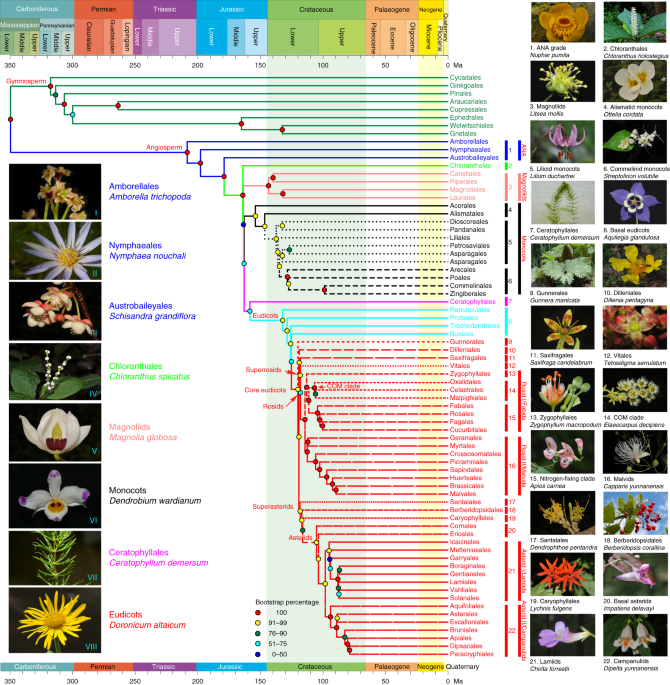 Li, H.-T., T.-S. Yi, L.-M. Gao, P.-F. Ma, T. Zhang, J.-B. Yang, M. A. Gitzendanner, P. W. Fritsch, J. Cai, Y. Luo, H. Wang, M. van der Bank, S.-D. Zhang, Q.-F. Wang, J. Wang, Z.-R. Zhang, C.-N. Fu, J. Yang, P. M. Hollingsworth, M. W. Chase, D. E. Soltis, P. S. Soltis, and D.-Z. Li. 2019. Origin of angiosperms and the puzzle of the Jurassic gap. Nature Plants 1. [View on publisher’s site | Free PDF download]
Li, H.-T., T.-S. Yi, L.-M. Gao, P.-F. Ma, T. Zhang, J.-B. Yang, M. A. Gitzendanner, P. W. Fritsch, J. Cai, Y. Luo, H. Wang, M. van der Bank, S.-D. Zhang, Q.-F. Wang, J. Wang, Z.-R. Zhang, C.-N. Fu, J. Yang, P. M. Hollingsworth, M. W. Chase, D. E. Soltis, P. S. Soltis, and D.-Z. Li. 2019. Origin of angiosperms and the puzzle of the Jurassic gap. Nature Plants 1. [View on publisher’s site | Free PDF download]
Abstract
Angiosperms are by far the most species-rich clade of land plants, but their origin and early evolutionary history remain poorly understood. We reconstructed angiosperm phylogeny based on 80 genes from 2,881 plastid genomes representing 85% of extant families and all orders. With a well-resolved plastid tree and 62 fossil calibrations, we dated the origin of the crown angiosperms to the Upper Triassic, with major angiosperm radiations occurring in the Jurassic and Lower Cretaceous. This estimated crown age is substantially earlier than that of unequivocal angiosperm fossils, and the difference is here termed the ‘Jurassic angiosperm gap’. Our time-calibrated plastid phylogenomic tree provides a highly relevant framework for future comparative studies of flowering plant evolution.
This paper was also accompanied by a commentary by Dr. Mandel: Mandel, J. R. 2019. A Jurassic leap for flowering plants. Nature Plants 5:455.